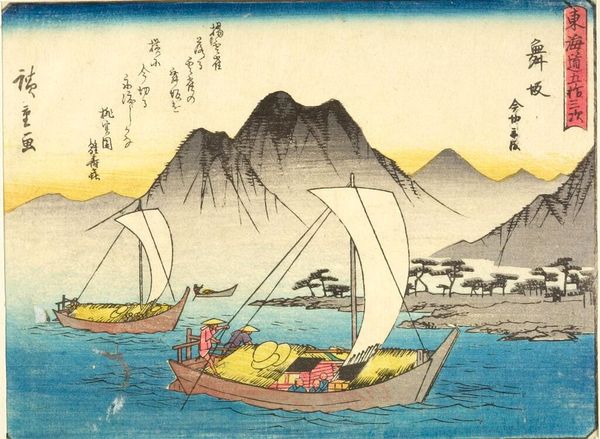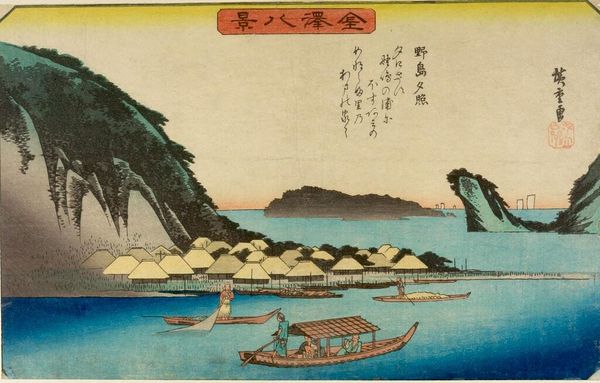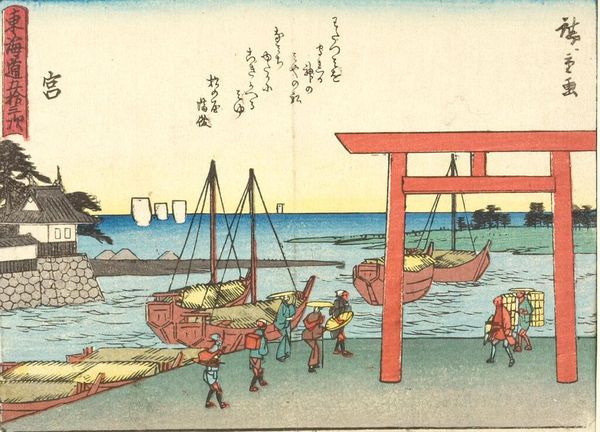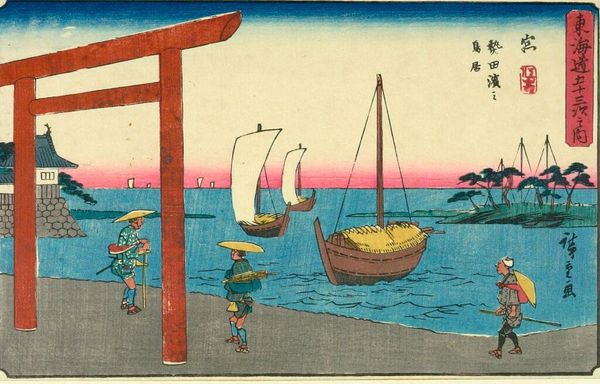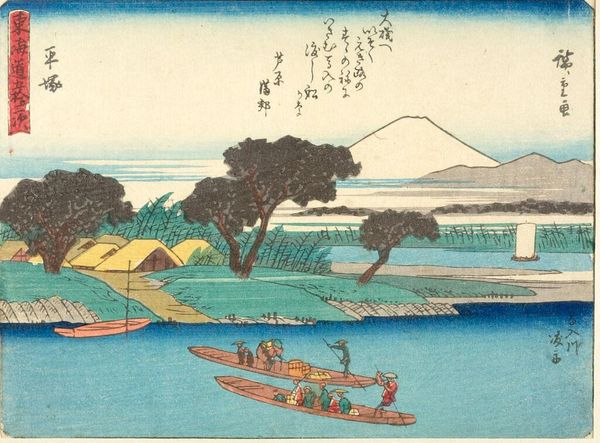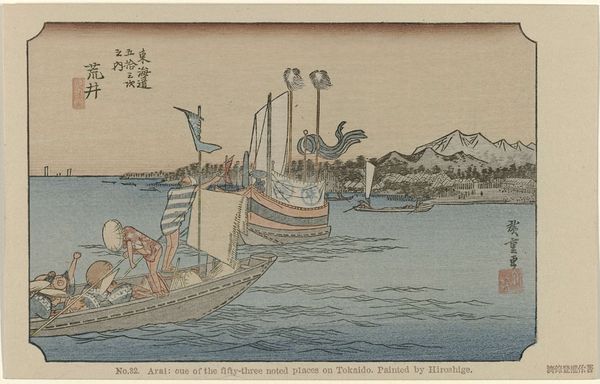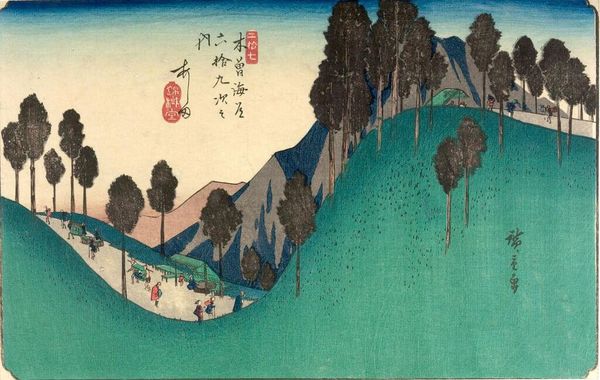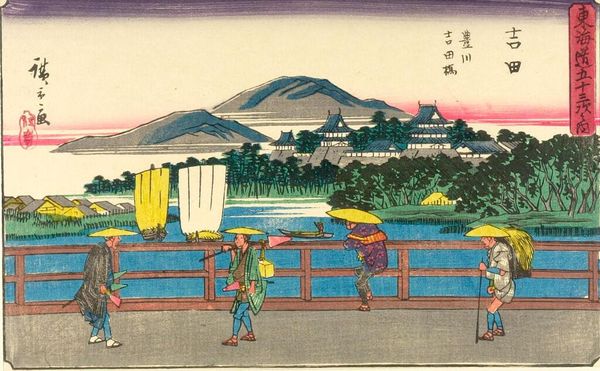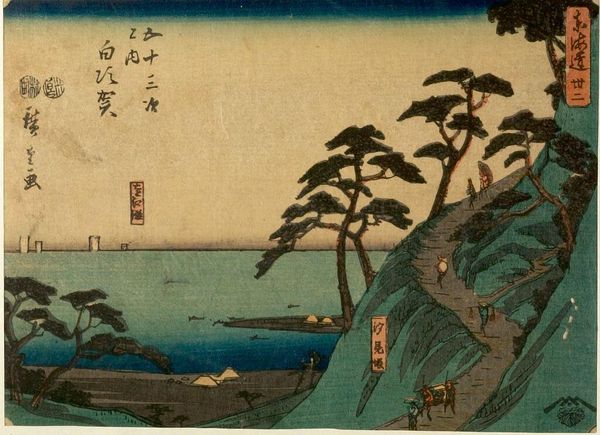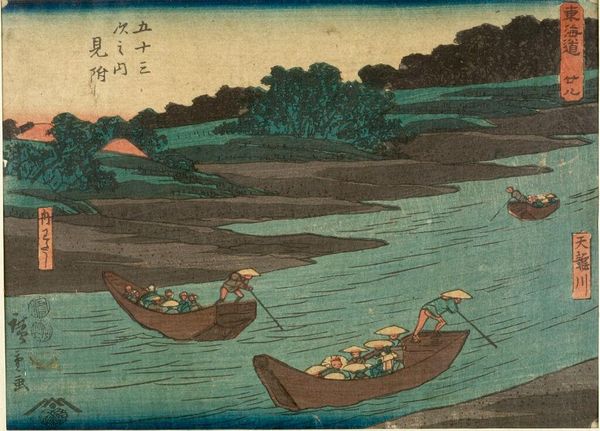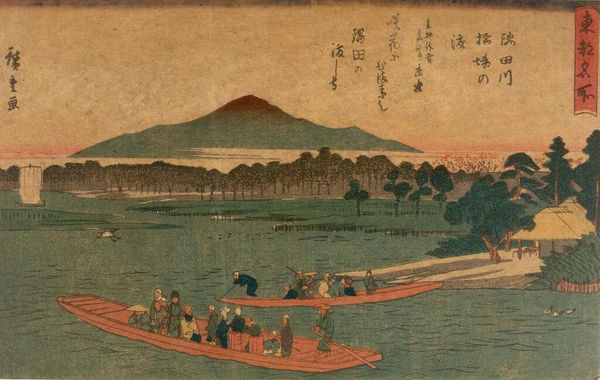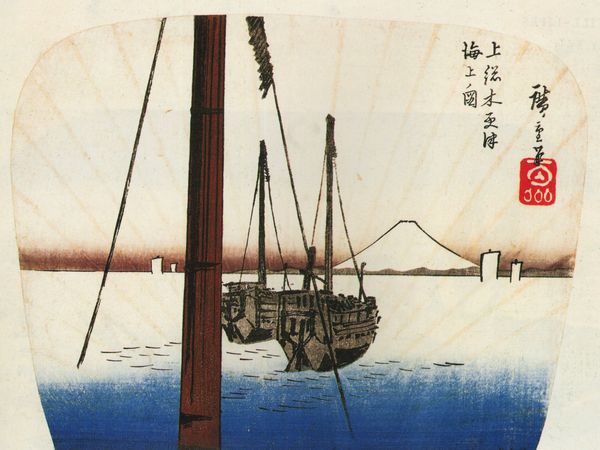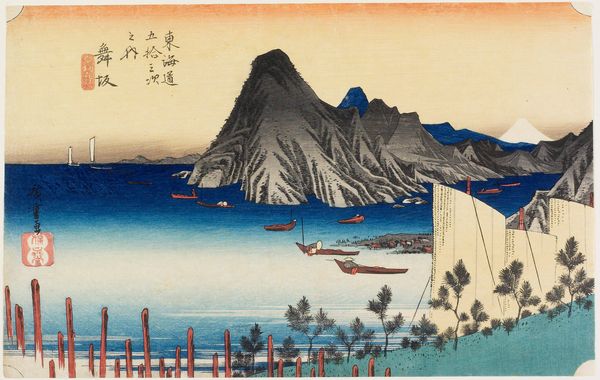
SMALL SERIES OF THE 53 STATIONS OF THE TOKAIDO. "MAIZAKA" STATION NO. 31 c. 19th century
0:00
0:00
Copyright: CC0 1.0
Editor: Here we have Utagawa Hiroshige’s woodblock print, "Maizaka" Station No. 31, part of the Tokaido series. I’m immediately drawn to the contrast between the serene landscape and the busy activity on the shore. What do you see in terms of its social context? Curator: This print highlights the Tokaido Road's pivotal role in Edo-period Japan, connecting distant regions. Notice how Hiroshige depicts not just the landscape but also the infrastructure and the people facilitating trade and travel. How does this imagery speak to the public's perception of progress and connectivity during that time? Editor: I see how the print captures a moment in time, idealizing travel while also hinting at the labor involved. Curator: Precisely. Hiroshige’s art was crucial in shaping a shared cultural understanding of Japan, reinforcing a sense of national identity through accessible imagery. It’s a powerful interplay of art, politics, and public consumption. Editor: That really opens up a new way to view these seemingly simple prints. Thanks! Curator: My pleasure. It is always rewarding to explore the multilayered narratives embedded within art.
Comments
No comments
Be the first to comment and join the conversation on the ultimate creative platform.
